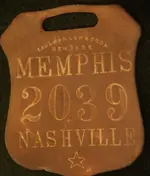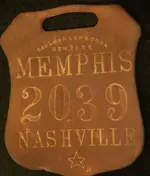Here's some info I found on the Memphis Nashville route.
The Louisville & Nashville Railroad was born March 5, 1850, when it was granted a charter by the Commonwealth of Kentucky “...to build a railroad between Louisville, Kentucky, and the Tennessee state line in the direction of Nashville." On December 4, 1851, an act of the Tennessee General Assembly authorized the company to extend its road from the Tennessee state line to Nashville.Laying of track began at Ninth Street and Broadway in Louisville in May of 1853. By 1855, the founding fathers of the L&N, most of them Louisville citizens, had raised nearly $3 million to finance the construction. The first train to operate over the railroad ran on August 25, 1855, when some 300 people traveled eight miles from Louisville at a speed of 15 mph!
A little more than four years later, on October 27, 1859, the first train operated all the way from Louisville to Nashville, joining the two namesake cities. For all practical purposes, the 187-mile railroad was complete. Scheduled trains began running a few days later, and with the exception of war, fire and several floods, they have been running ever since. The total cost of this original construction was $7,221,204.91.
By the time the Civil War began in 1861, the L&N had 269 miles of track. Located almost in the middle of the opposing armies, the L&N at various times served both the Union and the Confederacy as the tides of war changed. Although the railroad suffered considerable damage during the war years, it emerged in surprisingly good financial condition. It was so well off, in fact, that at the close of the war the L&N began expanding. Within a period of 30 years, through construction and acquisition of existing short railroads, the L&N extended its tracks to St. Louis in Missouri,Cincinnati in Ohio,Birmingham and Mobile in Alabama, Pensacola in Florida, and New Orleans in Louisiana.
Memphis, Tennessee was reached shortly after the close of the Civil War, and by 1872, the L&N had obtained sufficient track in Tennessee and Alabama to begin running trains between Louisville and Montgomery, Alabama. The acquisition of two smaller railroads, which made the route possible, also helped to create Birmingham. The vast deposits of iron and coal in the vicinity played important roles in the city's formation, and the first commercial steel produced there was financed in part by the L&N.
Cool find
HB





